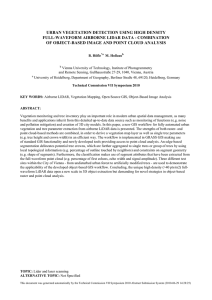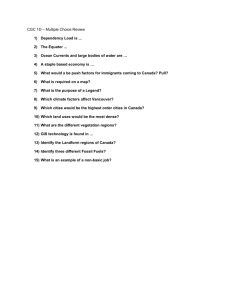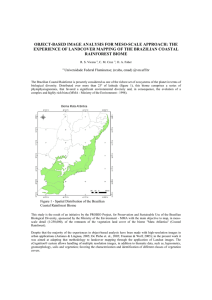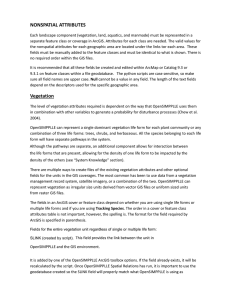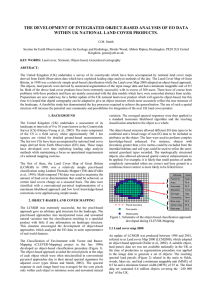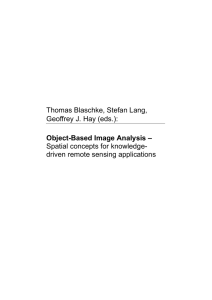OBJECT-BASED SEGMENTATION OF NATURAL LANDSCAPES USING
advertisement
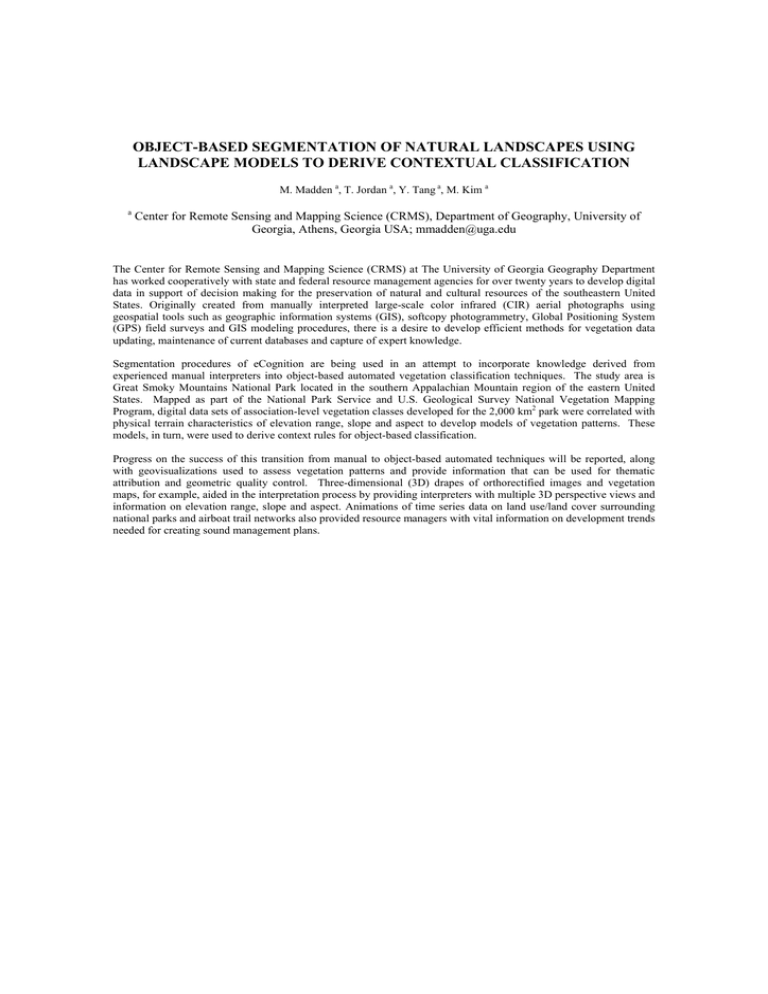
OBJECT-BASED SEGMENTATION OF NATURAL LANDSCAPES USING LANDSCAPE MODELS TO DERIVE CONTEXTUAL CLASSIFICATION M. Madden a, T. Jordan a, Y. Tang a, M. Kim a a Center for Remote Sensing and Mapping Science (CRMS), Department of Geography, University of Georgia, Athens, Georgia USA; mmadden@uga.edu The Center for Remote Sensing and Mapping Science (CRMS) at The University of Georgia Geography Department has worked cooperatively with state and federal resource management agencies for over twenty years to develop digital data in support of decision making for the preservation of natural and cultural resources of the southeastern United States. Originally created from manually interpreted large-scale color infrared (CIR) aerial photographs using geospatial tools such as geographic information systems (GIS), softcopy photogrammetry, Global Positioning System (GPS) field surveys and GIS modeling procedures, there is a desire to develop efficient methods for vegetation data updating, maintenance of current databases and capture of expert knowledge. Segmentation procedures of eCognition are being used in an attempt to incorporate knowledge derived from experienced manual interpreters into object-based automated vegetation classification techniques. The study area is Great Smoky Mountains National Park located in the southern Appalachian Mountain region of the eastern United States. Mapped as part of the National Park Service and U.S. Geological Survey National Vegetation Mapping Program, digital data sets of association-level vegetation classes developed for the 2,000 km2 park were correlated with physical terrain characteristics of elevation range, slope and aspect to develop models of vegetation patterns. These models, in turn, were used to derive context rules for object-based classification. Progress on the success of this transition from manual to object-based automated techniques will be reported, along with geovisualizations used to assess vegetation patterns and provide information that can be used for thematic attribution and geometric quality control. Three-dimensional (3D) drapes of orthorectified images and vegetation maps, for example, aided in the interpretation process by providing interpreters with multiple 3D perspective views and information on elevation range, slope and aspect. Animations of time series data on land use/land cover surrounding national parks and airboat trail networks also provided resource managers with vital information on development trends needed for creating sound management plans.


